The Free Stock Swing Trading Course is designed to give the essentials of what you need to swing trade stocks effectively, as well as several strategies.
This stock swing trading mini-course covers:
- The basics of setting orders.
- Where to place a stop loss (and what it is) in order to manage risk.
- How much stock to buy (position size).
- How and when to get out of a profitable trade.
- How to find trades (scanning).
- As well as some strategies that combine all these elements.
If you want more explanations about how things fit together, more strategies, and a chance to ask questions about the strategies, check out the Complete Method Stock Swing Trading Course. It provides more than 10 hours of video content revealing how to swing trade efficiently and effectively.
Free Stock Swing Trading Mini-Course
The stock swing trading mini-course is a list of helpful articles from the website. Go through the linked articles, in order, for a structured method of swing trading stocks.
Stock Swing Trading Basics
ORDER TYPES: One of the first things we need to understand for swing trading is how to place orders. Navigating Order Types sheds light on how to enter trades so you don’t need to stare at your screen all day (I set my orders at night when the market is closed).
READING A CHART – Candlesticks are a common chart type. Understanding how to read the chart is an important first step before learning strategies.
BID-ASK SPREAD – This bid/ask spread is how prices move. Consider this article an optional one. If you are short on time, skip it.
CONTROL RISK: An extension of placing entry orders is placing stop loss orders. A stop loss controls our risk on a trade. It is the point where we exit a trade at a loss because the stock didn’t do what we expected it to. To trade successfully, keeping losses small (relative to profits) is essential. Don’t skip this crucial step. We all like to think that our trades are sure bets, but they are not. Place a stop loss, so if the price goes the wrong way you won’t lose much.
POSITION SIZE: Next, we should know how much stock to buy on each trade. Our position size is not random. How much stock we buy is based on how much capital we have, our risk tolerance on each trade, and the specific setup of the stock (how far our stop loss is from our entry point). Risk too much, and you can blow out an account quickly. Risk too little and you won’t meet your goals. Position sizing is a key element for any strategy to be effective.
Knowing When Conditions Are Right For Swing Trading Stocks
If most stocks are collapsing, even if you see a nice setup to buy a stock (discussed next), is that trade worth taking? Probably not. You will be trading against the tide of the market.
CHECK MARKET HEALTH: It is helpful to do a bit of market analysis to determine if conditions are favorable for buying stocks. When conditions are unfavorable, more trades are likely to end up losers (if you take them). When conditions are favorable, we have a better chance of snagging a profit and should be more aggressive with our trading.
Reliable Stock Market Bottom Signals discusses some indicators and metrics that can be used to assess the stock market’s health, both while it is going up and after it has crashed (when to start buying again).
Also, each week in my Stock Market Outlook, I discuss the health of the market and what I am doing that week. Sometimes I say I am buying setups, other times I may only take trades with half-position sizes, other weeks I may not be buying anything at all.
Stock Swing Trading Strategies
USE A STRATEGY FOR EVERY TRADE: No trade happens unless a stock aligns with a strategy. A strategy is a tested method of trading that tends to work (produce a profit) over many trades. Without a strategy, every trade taken is just a gamble.
With all these strategies, our goal is to only trade stocks that are stronger (have moved up further and faster) than the market indexes and are stronger than most other stocks.
CUP & HANDLE: The Cup and Handle is an explosive stock swing trading pattern. This pattern is common in many stocks when the stock market indexes took a tumble but have started to turn back to the upside.
TRIANGLE PATTERN: As a stock’s uptrend progresses, and the stock indexes progress higher, we see a lot of triangle patterns. When they are occurring, focus attention on this pattern.
PROFIT TARGETS: With the strategies above, profit targets are mentioned along with some guidelines on how to take profit when a trade moves favorably. How to Set Profit Targets goes into more detail, and provides more examples of how and where to set exit orders for profitable trades.
TREND CHANNEL: As an uptrend matures and there are lots of up moves and down moves to connect via trendlines, we tend to see more trend channels developing. While many people use trendlines, it is important to have rules on how you draw them and use them, so you aren’t just drawing lines to confirm what you have already decided/believe. The article above covers how to draw trend channels, and how to trade them.
HIGH MOMENTUM ATR STRATEGY: This high momentum ATR method is designed to be more mechanical, as it uses an indicator to signal entries and exits. It is best used in high-momentum stocks and tends to capture lots of small gains and losses with THE odd huge win.
How to Find Stock Swing Trades (that align with a strategy)
I don’t pick a random stock and then try to trade it. For example, I don’t try to swing trade Apple or Tesla just because everyone is talking about them. Doing so would mean you need to come up with a strategy for whatever that stock is doing. That is backwards. Instead, I trade strategies that I know work, and then find stocks that have patterns or current conditions that align with those strategies (discussed above).
FIND STOCKS: I use a scanner to find stocks that meet my strategy criteria. For example, we can find triangle patterns and cups and handles by scanning for stocks in strong uptrends—with big percentage gains over various periods of time—and then manually looking through the results for stocks that are setting up for the strategy right now.
The scan list can be quite big, sometimes producing 200 stocks for example. Our job is to widdle the scan list down to a trade list of only a few stocks. These are the stocks from the scan that we will watch closely.
We then need to wait for the pattern to fully form, per the strategy guidelines, before entering a trade with the order types discussed above.
My preferred scanners are, in order:
Additional Skills and Knowledge That Will Help You with Swing Trading Stocks
PRICE ACTION: It’s helpful to learn about reading price action, and how price action can be used to spot trends and warn of trend reversals.
MENTAL GAME: Any style of trading is largely psychological. You can have the best strategy in the world, but if you can’t implement it because your mind gets in the way, then the strategy is pretty much useless.
We need to get our minds right for trading by practicing our strategies over and over again, striving for excellent execution in our process, and doing exercises that will help improve our minds for trading.
Also check out the Real Reasons Most Traders Lose Money, which provides precise steps to avoid being in that losing group.
TRACKING TRADES: I created a downloadable swing trading log in Excel where you can track all your trades and statistics. All the statistics are calculated for you, and the spreadsheet can even help you determine your position size.
Final Word on the Free Stock Swing Trading Mini-Course
With just the information here you can start developing your own highly effective swing trading method.
Everything works together. A good entry without a stop loss or way to take profit is asking for trouble. Trying to swing trade when conditions aren’t right is also trouble. Any trade with the wrong position size leaves us exposed to too much risk or the trade not being worth our time.
Trading has multiple steps. Now you have a process for navigating those steps.
Cory Mitchell, CMT
The Complete Stock Swing Trading Course by Cory Mitchell, CMT covers the content in this article more in-depth, with video examples and explanations.
Learn how to read market conditions, how to find potentially explosive trades, where to get in and get out, how to fine-tune trade selection, and how to manage risk.
This is a complete method for swing trading stocks, revealed in step-by-step video format.


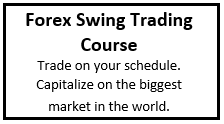
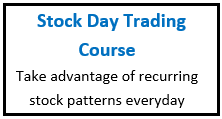
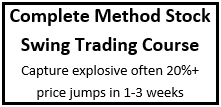
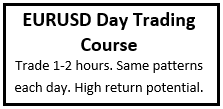
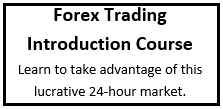
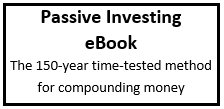
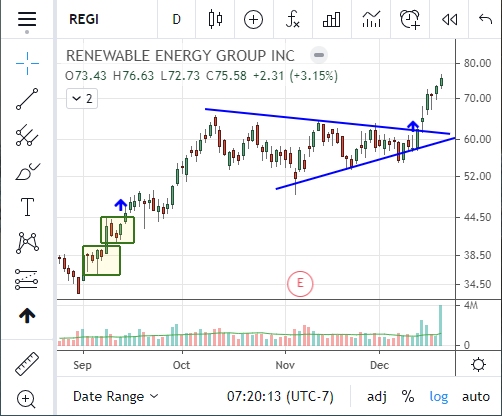
2 Comments
Leave your reply.